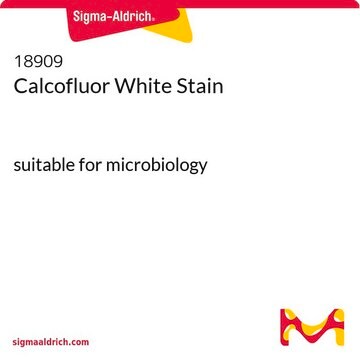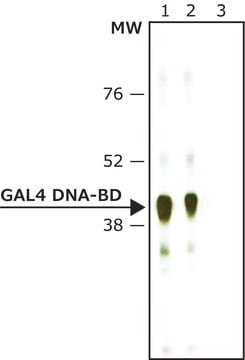F3543
Fluorescent Brightener 28
used as a stain and brightening agent
Synonym(s):
Calcofluor White M2R, Tinopal UNPA-GX
About This Item
Recommended Products
form
powder
mp
300 °C
εmax
40-60 at 238-242 nm in water at 0.01 g/L
application(s)
diagnostic assay manufacturing
hematology
histology
storage temp.
room temp
SMILES string
OCCN(CCO)c1nc(Nc2ccccc2)nc(Nc3ccc(\C=C\c4ccc(Nc5nc(Nc6ccccc6)nc(n5)N(CCO)CCO)cc4S(O)(=O)=O)c(c3)S(O)(=O)=O)n1
InChI
1S/C40H44N12O10S2/c53-21-17-51(18-22-54)39-47-35(41-29-7-3-1-4-8-29)45-37(49-39)43-31-15-13-27(33(25-31)63(57,58)59)11-12-28-14-16-32(26-34(28)64(60,61)62)44-38-46-36(42-30-9-5-2-6-10-30)48-40(50-38)52(19-23-55)20-24-56/h1-16,25-26,53-56H,17-24H2,(H,57,58,59)(H,60,61,62)(H2,41,43,45,47,49)(H2,42,44,46,48,50)/b12-11+
InChI key
CNGYZEMWVAWWOB-VAWYXSNFSA-N
General description
Application
Signal Word
Warning
Hazard Statements
Precautionary Statements
Hazard Classifications
Eye Irrit. 2
Storage Class Code
13 - Non Combustible Solids
WGK
WGK 1
Flash Point(F)
Not applicable
Flash Point(C)
Not applicable
Personal Protective Equipment
Certificates of Analysis (COA)
Search for Certificates of Analysis (COA) by entering the products Lot/Batch Number. Lot and Batch Numbers can be found on a product’s label following the words ‘Lot’ or ‘Batch’.
Already Own This Product?
Find documentation for the products that you have recently purchased in the Document Library.
Customers Also Viewed
Our team of scientists has experience in all areas of research including Life Science, Material Science, Chemical Synthesis, Chromatography, Analytical and many others.
Contact Technical Service











